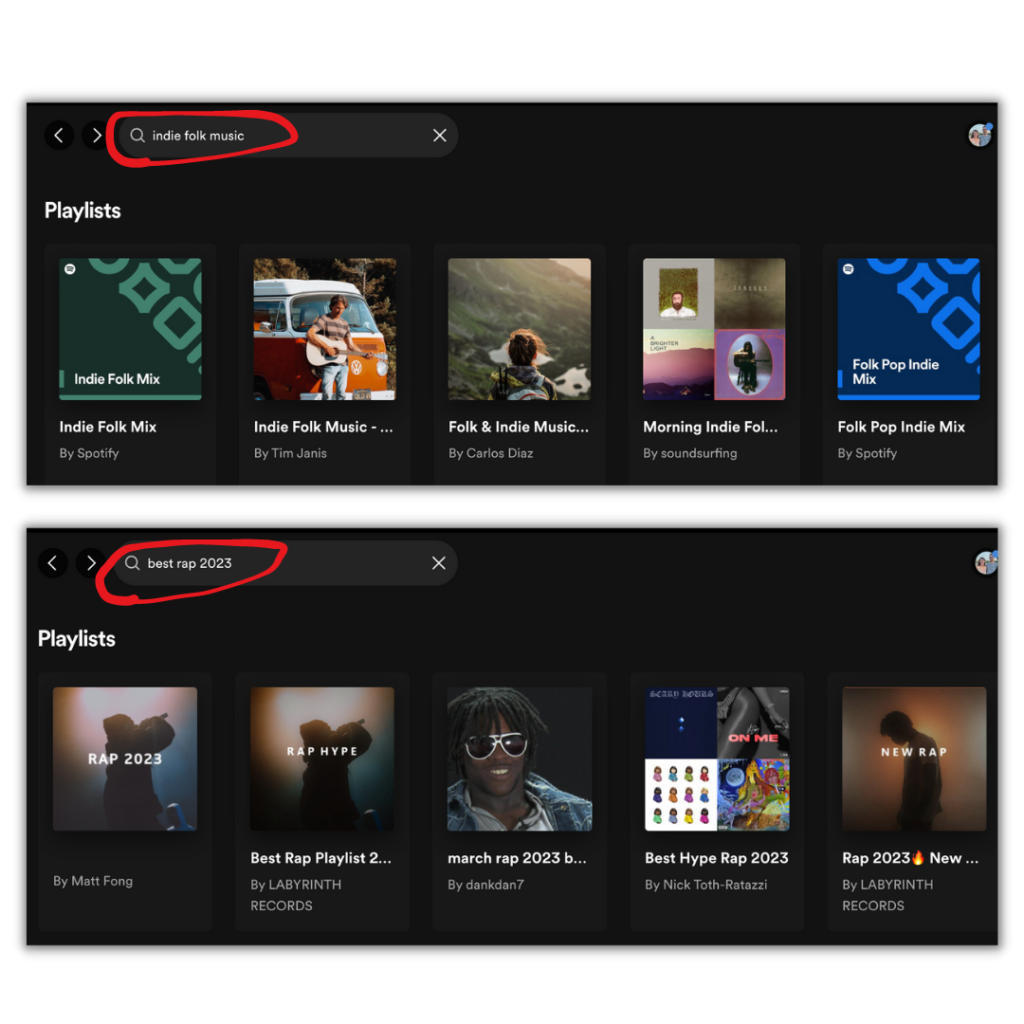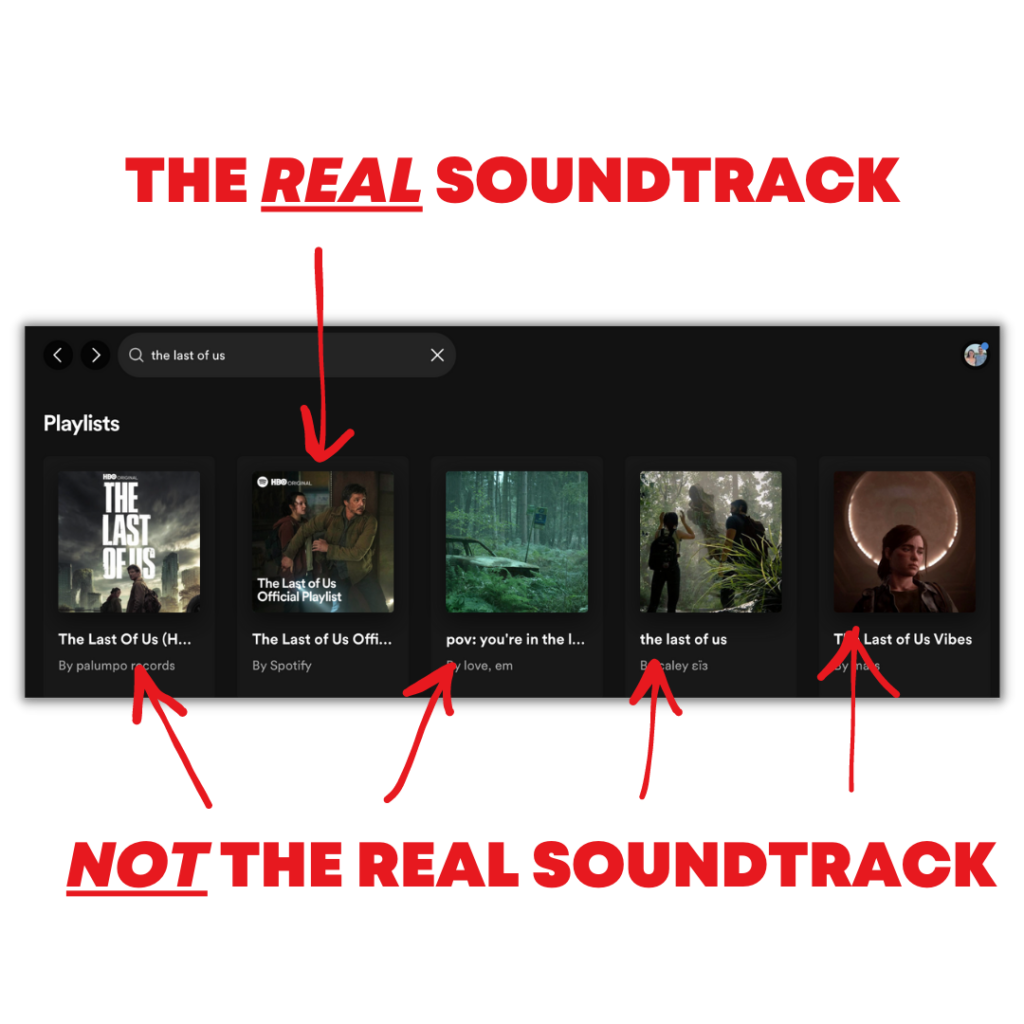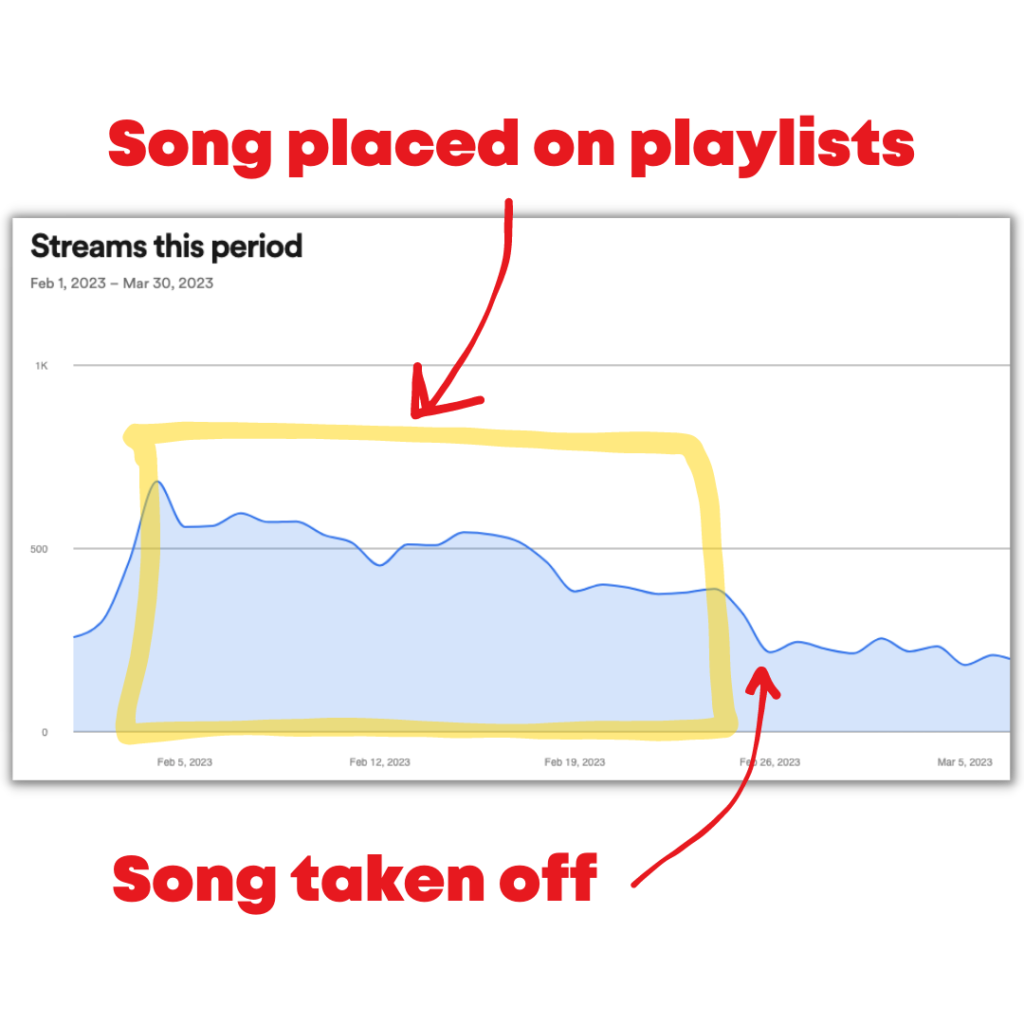That’s right, we’re jumping right into some (mild) controversy – but hopefully it’s enlightening and actionable for you.
This topic has been on my mind because I’m in the midst of trying 15 different playlist promo companies. Overall, I would say it’s been a slightly disappointing experience.
Don’t get me wrong; it hasn’t been bad. Actually, the impact on streaming has been mostly positive – just not necessarily great or, from what I can tell at this point, long lasting.
As I wrote last week, I don’t think that the majority (or, actually, any) of these promo companies are scams, but their results don’t often blow you out of the water, either.
This is what typically happens:
1. You submit the song for promotion.
I’m about eight campaigns in, and prices for an entry-level promotion have ranged from around $50 to just over $300. Some companies don’t let you pay until they’ve manually reviewed and approved your song.
Other companies let you pay upfront, but still manually check your song on the backend before starting your campaign, and they may refund you if they think your music won’t work for their network.
And still other companies let you pay for a campaign without any review (or, usually in this case, any guarantee of results).
So far, after submitting eight songs by eight different artists, I haven’t had a single company reject or refund me.
2. Playlist placements start to come in.
This is the direct result you’re paying for, so I’ll try to unpack how it works in detail, at a couple different levels.
Timeframe: Placements usually happen pretty quickly – so far, it hasn’t taken longer than a week for a song to get added to playlists once I’ve paid for a campaign. Actually, I think every company has delivered within three to five days.
Type of playlists: These are all user-created playlists; there is no legitimate company that can guarantee you’ll be placed on an editorial playlist (although there are, supposedly, handshakes that happen behind closed doors in rooms I have never been in).
Some playlisting companies focus on user-created lists that have been built through ads. But in 2023, most companies have moved toward an SEO-based playlist model. In other words, they’re trying to work with lists that show up when you search for common keywords, like “best rap 2023” or “indie folk music.”

These types of lists are good for two reasons:
1) They get streams because they have traffic, and 2) they’re typically real streams, because Spotify doesn’t tend to feature lists with bots.
But focusing on SEO-winning playlists has a drawback, too: Often, popular search terms aren’t all that helpful for categorizing your music.
For example, every time there’s a hit TV show, searches spike for the accompanying soundtrack (i.e., “The Last of Us Soundtrack”).
Third-party curators try to take advantage of this search traffic with correspondingly-named playlists that do, in fact, show up in Spotify search results – but don’t, really, have anything to do with the songs from the show.

You won’t get on the real soundtrack unless you really get a song in the soundtrack (“Duh,” you’re thinking).
But you absolutely can get on one of the not-real soundtracks – and if you’re now thinking, “That’s lame,” you’re kind of right. It’s basically an attempt at gaming the system a little bit.
And it works. These not-real-soundtrack playlists often get tons of (organic) streams.
The problem is that the lists can be a mishmash of songs and genres. So if you actually get included on one of them, it’s not necessarily a good thing. You’ll probably get a bunch of streams, but they may not be from people who are interested in your style of music, and there’s the risk that you might get skipped a lot, too.
Sometimes, though, being on one of these is great. It all varies from list to list and from song to song.
But the moral of the story is that you probably shouldn’t expect a playlisting company – even one that guarantees organic streams – to nail the perfect placement on every playlist. Usually, you’ll have to kind of squint for at least one playlist and go, “Eh, I guess I can see how that fits.”
3. You get taken off lists after about a month (and after that, you hope for long-term engagement).
You can pay some companies to run longer campaigns, but none of the eight promotions I’ve run so far has lasted for more than a month.
Once your song gets taken off of playlists, the streams stop. Usually, it looks something like this:

So it’s a pretty sharp decline from the initial spike. What you hope for, though, is that your new “normal level” of streams is higher than your initial level of streams – in other words, that you’re getting more streams per day than you were before the campaign, for a prolonged period of time.
This new level can happen for two reasons:
1) A bunch of people heard your song when it was on the playlists, saved it to their own libraries, and now stream it a lot.
2) Spotify noted that you were getting a bunch of good engagement, so they start to show your song in their algorithmic playlists (Daily Mix, Radio, Discover Weekly, etc.).
Almost always, the second thing (algorithmic love) requires the first (people to save your song). Usually, these two things happen in tandem.
Often, though, neither of these things happens to a notable level, and your song reverts to somewhere around its previous level.
And with all of that said, let’s bring it around to a bottom-line takeaway:
Should you pay for playlist promotion?
My answer is (as with probably too many things): It depends.
There is always something of a risk with playlist promotion. Because even if you work with a company that has never touched a bot with a hundred-and-ten foot pole, you can still wind up on playlists that aren’t a great fit for your music, and bad engagement has a negative effect on your future reach.
(Basically, if you make Spotify think your music is bad, they won’t want to show it to anybody.)
But there’s also huge upside.
A few of the most-streamed songs I’ve worked on (songs with now-millions of streams) owe a sizable chunk of their success to playlisting campaigns. Obviously, it’s hard to determine cause and effect exactly, but I’ve seen multiple times where a song has spiked with playlists and then settled far above its previous normal level of streams, resulting in serious long-term growth.
Time will tell, but so far from the eight campaigns I’ve run, I think this is on track to happen for one of the songs. Make of that what you will.
Personally, I’m in favor of running a two-pronged promo campaign, if you can – you use Facebook ads to drive steady, dependable growth with high engagement, and you treat playlisting as a high-risk, high reward stock.
But I know doing both of those things requires a lot of money, and it probably isn’t realistic if you’re currently questioning whether you can afford guacamole at Chipotle (relatable).
You’ve got a decision to make. You can:
- Do all DIY-promo (free but time-consuming, results vary)
- Pay for playlisting (costs money but no time, high risk, high reward)
- Set up ads (generally a little more expensive, lower risk and steadier reward)
- Forget about Spotify (stick it to the man, start a farm, and live your best life)
These are all legitimately valid options.
And ultimately, it’s your call.
All right, that’s all I’ve got – for now, at least. I’ll definitely be talking about this more in the future when I’ve completed all 15 campaigns; I’m planning to do a review of each one (although I’m increasingly thinking it’ll take a while to make that happen).
Anyway, I hope this post has at least pretended to be helpful toward informing your Spotify strategy.
Either way, I appreciate you reading it, and I’m wishing you good luck.








